A new project seeks to improve sorghum breeding by combining the best aspects of two powerful software applications, applying cutting-edge genomic research to agriculture and building partnerships between scientists in the U.S., Senegal and Costa Rica.
Sorghum, a grain that grows faster than wheat and has stronger drought tolerance than corn, is a critically important crop in both Senegal and Costa Rica. A new initiative from the Feed the Future Innovation Lab for Crop Improvement (ILCI) will aid plant breeders in those countries in developing new sorghum varieties, in collaboration with the lab of Ed Buckler, ILCI’s genomics lead, research geneticist with the U.S. Department of Agriculture – Agricultural Research Service and an adjunct professor of plant breeding and genetics; Ndjido Ardo Kane, director of ILCI’s center for Crop Innovation in West Africa in Senegal; and Jose R. Camacho, director of ILCI’s Central American and Caribbean Crop Improvement Alliance (CACCIA) in Costa Rica.
“We are excited for the opportunity to strengthen CACCIA’s genomics team’s practical skills on this important new and important software tool,” Camacho said.
“Consequently, we’ll be able to strengthen our common bean and sorghum breeding programs through the implementation of genomics and transcriptomics goal-oriented research.”
The new project seeks to harness breakthroughs in basic science to help plant breeders make better genome-based predictions about plant phenotypes – or how genes will be expressed in a given plant – so they can select for desirable qualities such as high yield.
“Genomic prediction looks at DNA and tries to extrapolate how sequence variation will impact the plant,” said Bethany Fallon Econopouly, research associate at Cornell and international applied genomics lead at ILCI.
Current DNA-based comparisons involve a huge number of variants, which may or may not end up impacting useful traits in a plant. Looking “a level up,” at how RNA and proteins are expressed from DNA, reduces variation and can provide more helpful information for breeders, Econopouly said.
Most plant breeding models are based on DNA, and this project will seek to incorporate RNA and protein expressions, as well.
The researchers have combined the best features of two technologies for plant breeding researchers: TASSEL software and the R coding language. TASSEL is the leading software tool used to evaluate plant diversity; it has more than 20,000 users per year. R is a computer-coding language used by many breeders and other applied scientists that enables scientists to trace and repeat data experiments more efficiently than is possible with the simple TASSEL graphical interface.
Before TASSEL was integrated with R, it was less accessible to plant breeders, Econopouly said. Brandon Monier, a postdoctoral researcher in the Buckler Lab, developed rTASSEL, so TASSEL can be used with R. It will now be updated to incorporate new features developed by ILCI researchers.
The partnership between basic scientists in the U.S. and applied scientists in Costa Rica and Senegal is critical to the success of the project, because it will enable real-time, country-specific feedback.
“For basic scientists, one of the challenges is communicating with applied researchers to see if the tools you’re developing and the models you’re developing are actually useful for them. Do they agree that the tool is user friendly? Does it improve the accuracy of the prediction? Which traits are most important in your country?” Econopouly said.
“With these partnerships in Senegal and Costa Rica, we develop the tools together, which should improve our models, improve the software and, ultimately, improve plant breeding.”



